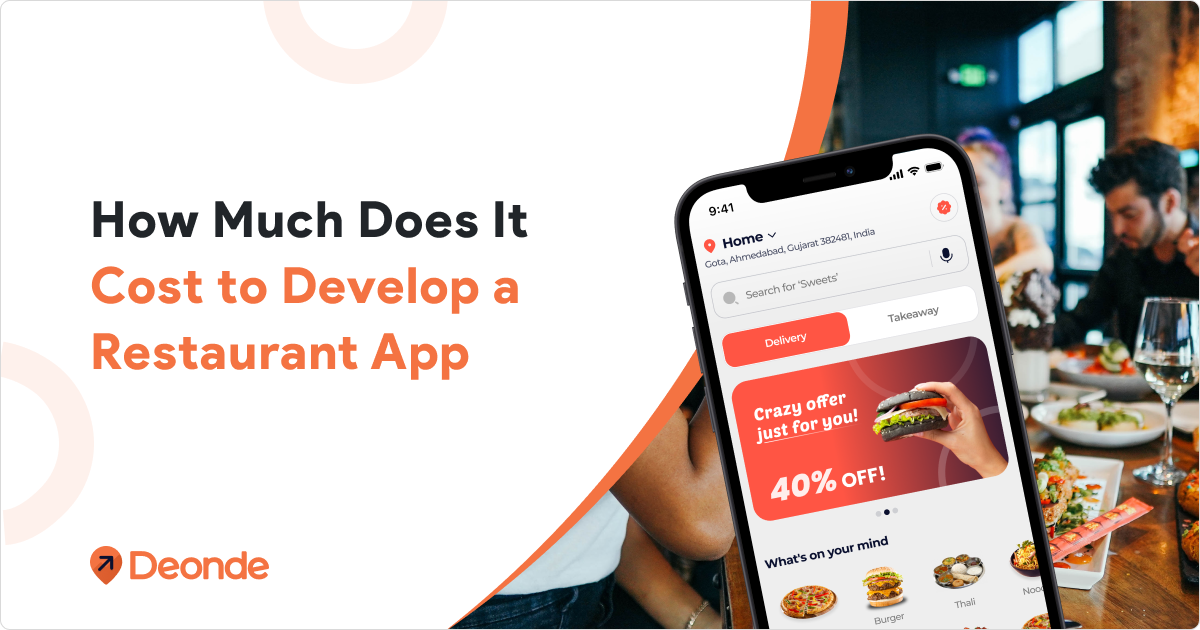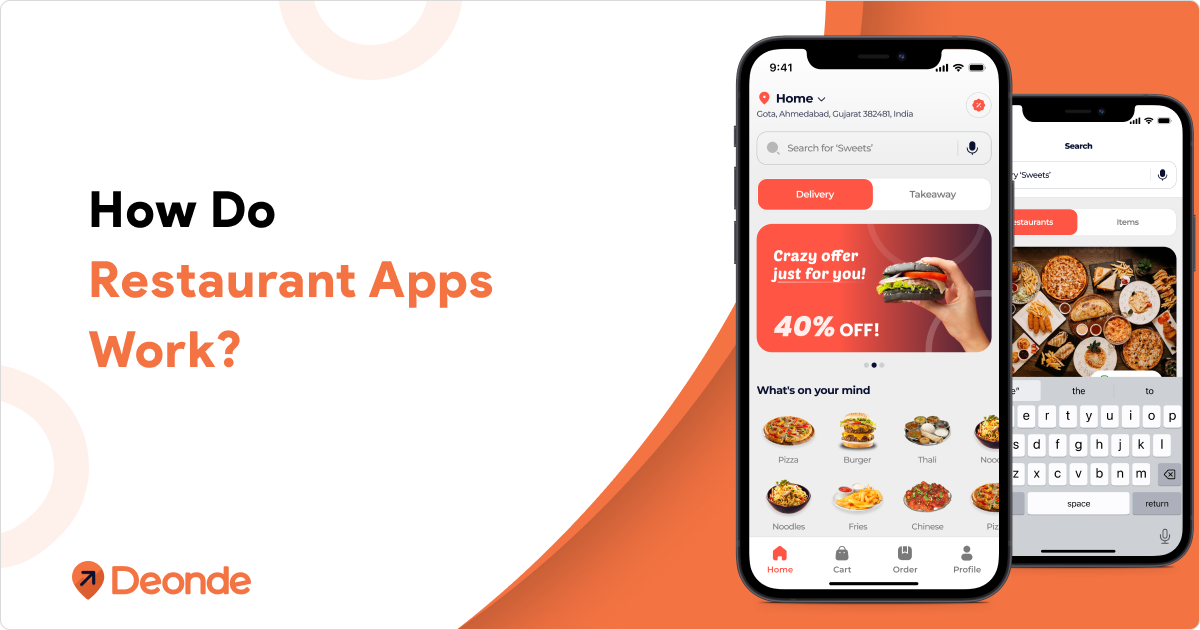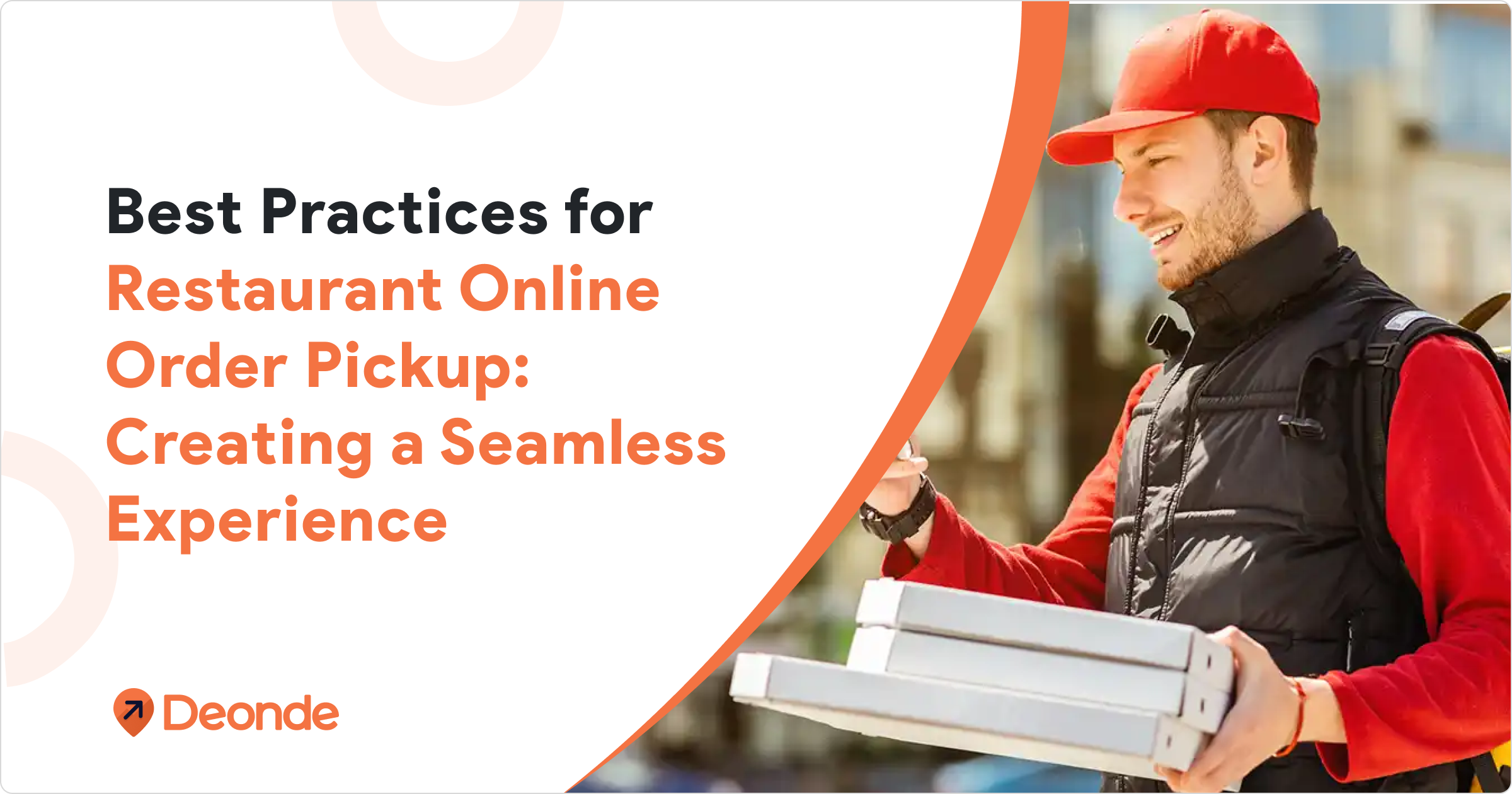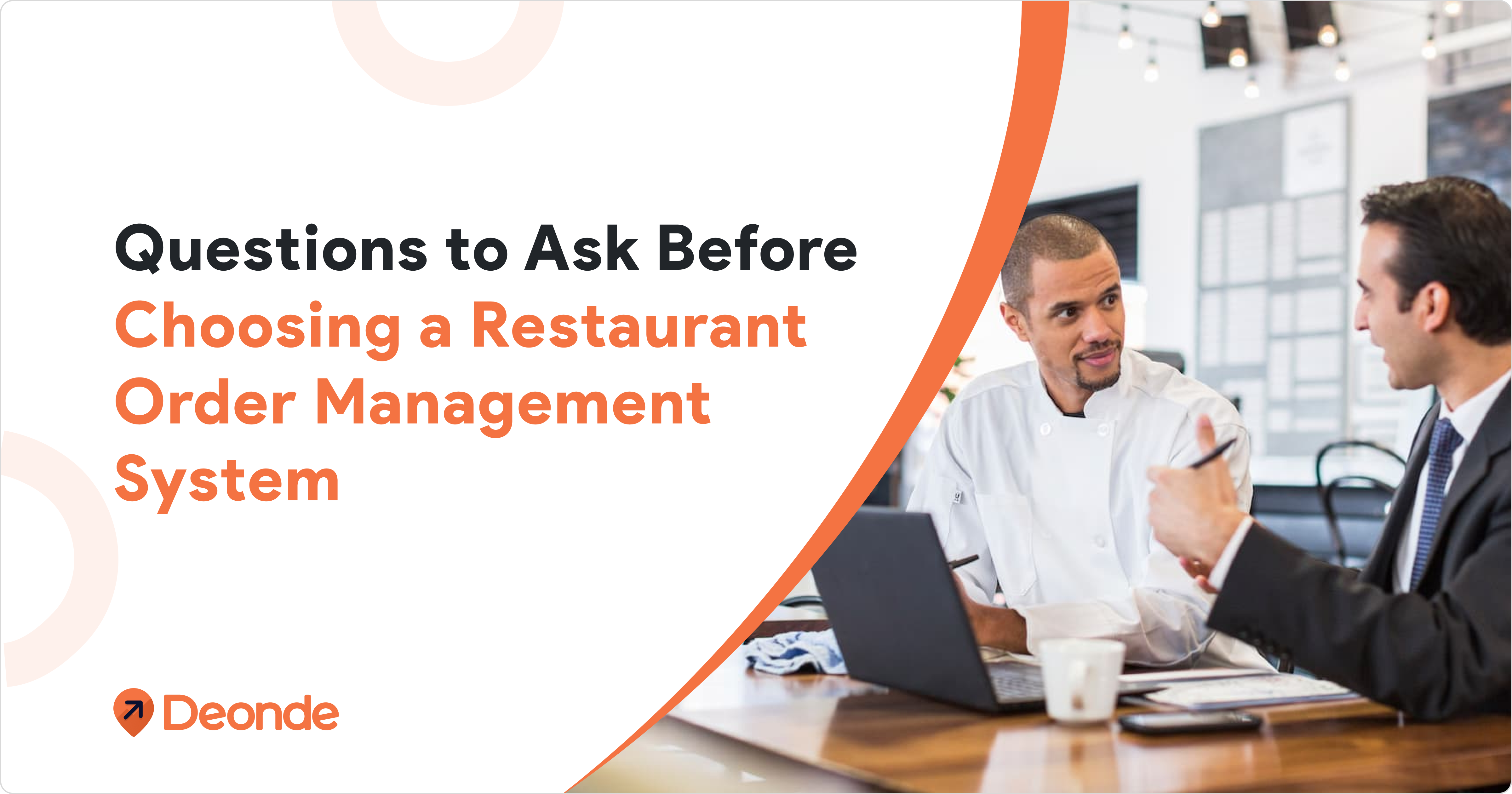In today’s digitally-driven world, mobile apps have become an essential tool for restaurants to thrive. With rising customer expectations for convenience, contactless ordering, and loyalty programs, restaurants must adapt or risk being left behind. The natural question then arises: how much does it cost to develop a restaurant app?
This question is not just common—it’s crucial. Whether you’re a new restaurant owner hoping to enter the digital space or an established brand looking to modernize your customer experience, understanding the investment involved in app development is key to strategic decision-making.
Different factors like design difficulty, extra features, used technologies and the place your team is located can influence the cost of development. This blog goes into detail about every aspect, allowing you to explore your options, decide wisely and finish your project without breaking the bank.
When planning to include a restaurant mobile app in 2025, this blog covers all the important details.
Why Do You Need Restaurant Application Development for Your Business?

A restaurant app is a game-changer in today’s competitive dining industry. With 71% of consumers preferring to order directly through a restaurant’s app or website, and the global online food delivery market projected to hit $1.65 trillion by 2027, investing in restaurant app development is a strategic move. Here’s why:
- Direct Customer Engagement: Unlike third-party platforms like Uber Eats, a custom app lets you control the customer experience, from personalized offers to branded interfaces, fostering loyalty.
- Increased Brand Loyalty: Personalized offers and loyalty programs within a restaurant ordering app encourage repeat purchases. Studies show that loyal customers spend 67% more than new ones.
- Increased Revenue: Apps can boost sales by up to 15%, as seen with brands like Chipotle, which reported a 14.6% same-store sales increase after prioritizing digital ordering.
- Direct Marketing Channel: Push notifications and in-app promotions allow you to communicate directly with customers, bypassing third-party platform restrictions.
- Streamlined Operations: Features like online ordering and table reservations reduce staff workload and minimize errors, improving efficiency.
- Data-Driven Insights: Apps collect customer data, enabling targeted marketing campaigns and menu optimizations based on preferences.
- Competitive Edge: A branded app sets you apart in a crowded market, signaling innovation and customer focus.
Key Takeaway: A restaurant app isn’t just about keeping up—it’s about staying ahead. It drives revenue, enhances customer experience, and strengthens your brand in the digital dining landscape.
Factors Influencing Restaurant App Development Cost

The mobile application development cost for a restaurant app depends on several key factors. Understanding these will help you estimate your budget and make informed decisions.
1. App Complexity and Features
The complexity of your restaurant app significantly impacts the cost. Apps range from basic solutions to advanced platforms with sophisticated functionalities. Here’s a breakdown:
- Basic Restaurant App: Includes essential features like menu display, online ordering, and payment integration. Costs typically range from $5,000 to $15,000.
- Mid-Tier Restaurant App: Adds features like table reservations, push notifications, loyalty programs, and customer reviews. Costs range from $15,000 to $30,000.
- Advanced Restaurant App: Includes complex features like real-time order tracking, AI-powered chatbots, 3D menus, or multi-location support. Costs start at $25,000 and can exceed $100,000.
Example: A small café might opt for a basic app costing $8,000-$15,000, while a chain like Starbucks, with features like order tracking and loyalty rewards, might spend $50,000-$100,000.
2. Platform Choice (iOS, Android, or Both)
The choice of platform—iOS, Android, or cross-platform—affects the app development cost.
- Native Apps: Separate apps for iOS and Android increase costs due to platform-specific coding. A single-platform app might cost $10,000-$20,000, while both platforms could double the cost.
- Cross-Platform Apps: Frameworks like Flutter or React Native reduce costs by 30-40% with a single codebase. A cross-platform restaurant ordering app might cost $10,000-$25,000.
- Hybrid Apps: Web-based apps with a native wrapper balance cost and performance, costing $8,000-$15,000.
Example: A hybrid app built using a ready-made platform like Deonde gives an affordable price with subscriptions, ideal for small restaurants.
3. Design and User Experience (UI/UX)
A user-friendly and visually appealing restaurant app is critical for retention. Custom UI/UX design, including interactive menus and seamless navigation, can add $2,000-$5,000 for basic designs or $10,000+ for premium designs.
4. Development Team and Location
The cost of hiring a restaurant app developer varies by expertise and location:
- North America/Australia: Developers charge $50-$150/hour, leading to costs of $30,000-$100,000 for a mid-tier app.
- Eastern Europe/India: Rates of $20-$50/hour make it more affordable ($5,000-$30,000).
- Freelancers: Offer lower costs ($5,000-$20,000) but may lack reliability.
- ready-made Platforms: Platforms like Deonde offer apps starting at affordable price with subscriptions.
Example: A mobile app development company in India might charge $15,000-$25,000 for a mid-tier app, while Deonde’s ready-made solution offers a budget-friendly alternative.
5. Maintenance and Updates
Post-launch costs, including hosting and updates, are 10–20% of initial costs annually (e.g., $1,000–$15,000/year for a $10,000 app). Regular updates signal reliability to AI search engines.
6. Third-Party Integrations
Integrating payment gateways (e.g., Stripe, PayPal), GPS, or push notifications adds $1,000-$5,000 per integration.
Must-Have Features for Your Restaurant App

To create a competitive app that resonates with users and ranks in AI search results, include these essential features, structured for clarity:
- Online Ordering: Allows customers to browse menus, customize orders, and pay seamlessly. This is a top priority, as 60% of diners prefer ordering directly from restaurants.
- Table Reservations: Enables users to book tables in advance, reducing wait times and improving operations.
- Push Notifications: Keeps customers engaged with promotions, order updates, or new menu items.
- Loyalty Programs: Rewards repeat customers with discounts or points, increasing retention by up to 20%.
- Payment Integration: Supports secure payments via Stripe, PayPal, or Apple Pay for convenience.
- Delivery Tracking: Real-time GPS tracking builds trust and enhances user experience.
- Customer Feedback: Allows users to leave reviews, helping you refine offerings and signal quality to LLMs.
Key Takeaway: These features drive engagement and ensure your app is citable in AI search results by clearly addressing user needs.
How Can Deonde Help Your Business with Restaurant App Development?

Deonde offers a cost-effective, ready-made solution for restaurant app development, making it easy for businesses of all sizes to launch a branded restaurant mobile app. Here’s how Deonde can support your business:
- Affordable Ready-Made Platform: Deonde’s ready-to-use templates allow you to create a restaurant ordering app at an affordable price like a budget-friendly alternative to custom development costing $10,000-$30,000.
- Customizable Features: Choose from essential features like menus, online ordering, loyalty programs, and push notifications, tailored to your brand.
- Quick Deployment: Launch your app in 7 days, compared to 10-40 weeks for custom apps.
- Seamless Integrations: Deonde supports payment gateways, geolocation, and analytics, ensuring a robust user experience.
- Scalable Solutions: Start with a basic app and add advanced features like real-time tracking as your business grows.
- Dedicated Support: Deonde provides ongoing maintenance and updates, keeping your app competitive without high costs.
Example: A small diner using Deonde can launch a restaurant food ordering app with a menu, ordering system, and loyalty program at an affordable price with subscriptions, saving significantly compared to hiring a mobile app development company.
Cost Estimates by App Type
|
App Type |
Features |
Cost Range |
Development Time |
|
Basic App |
Menu, ordering, payments |
$5,000-$15,000 |
10-20 weeks |
|
Mid-Tier App |
Table reservations, loyalty programs, reviews |
$15,000-$30,000 |
20-30 weeks |
|
Advanced App |
Real-time tracking, AI chatbots, multi-location |
$25,000-$100,000+ |
30-40 weeks |
|
Deonde Ready-Made Solution |
Menu, ordering, loyalty programs, customization and all Advanced Features |
Affordable price with subscriptions |
7 days |
Tips to Reduce Restaurant App Development Costs
1. Start with an MVP: Build a minimum viable product with core features to test the market, saving 30-50% on costs.
2. Use Ready-Made Platforms: Deonde gives affordable price with subscriptions for app development.
3. Leverage Open-Source Tools: Reduce licensing fees with free frameworks.
4. Hire Offshore Developers: Developers in India or Eastern Europe offer quality at $20-$50/hour.
5. Prioritize Scalability: Build an app that supports future upgrades to avoid rebuilds.
Drive Success with a Strategic Restaurant App
A restaurant app is a powerful tool to attract customers, streamline operations, and build loyalty. By incorporating must-have features like online ordering, loyalty programs, and push notifications, and aligning them with the sales funnel, you create a seamless user journey. Solutions like Deonde give affordable price like a budget-friendly path to restaurant app development. Whether you’re a small café or a large chain, careful planning and performance tracking will maximize your ROI.
Whether you’re a local eatery or a global chain, a well-executed restaurant app can set you apart. Start with an MVP, prioritize user-centric features, and partner with a trusted Deonde team to bring your vision to life.






